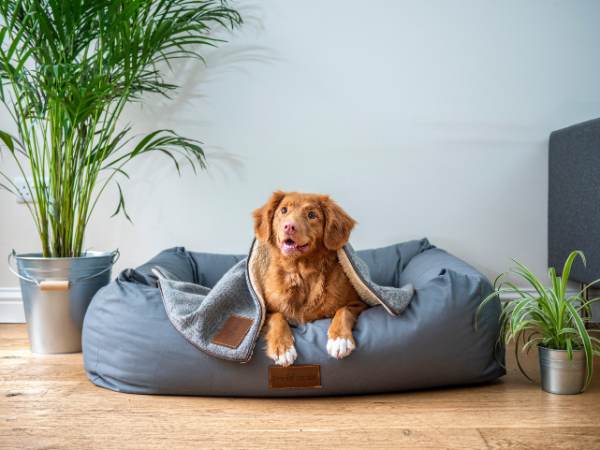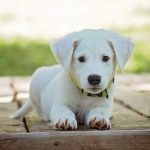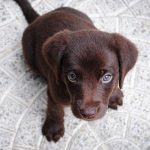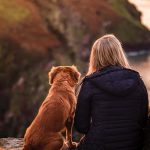Puppies are curious and energetic animals, and it’s in their nature to explore every puddle and roll in the mud whenever they go outside. When can you bathe a new puppy? You may be wondering if your new puppy is too small for a bath. We give you help on when and how to bathe your new puppy in this article. Please start reading now.
When Can You Bathe A New Puppy After Birth
Your puppy can be exposed to bathing through acclimation at a very young age, sometimes as early as 4 weeks after birth.
This, however, isn’t always a good idea because it’s possible for them to unintentionally inhale water at this young age. It is important to note that this can be extremely risky, if not fatal and that it should be treated seriously.
Instead, I advise you to wait until the puppy is two months old before giving it a bath. Then, without as many worries as before, you can bathe your puppy for the first time without risk.
Having said that, many zookeepers will advise you that it’s safe to bathe your puppy for the first time at any age after six weeks.
How Often Should You Bathe A Puppy
A puppy’s coat can become dry and irritated if it is bathed too frequently, which can also remove important oils from the coat. Your puppy might require a bath four times a year, depending on the breed, unless they get particularly dirty. In order to prevent dirt and debris from getting caught in your puppy’s dense, curly coat, give them a bath every two months.
Some breeds have two coats: a longer outer coat and a softer undercoat. Akitas, Huskies, Alaskan Malamutes, and German Shepherds shed twice a year, in the spring and the fall, so it’s advised that you bathe them at the same time each year. This helps to remove extra fur as your dog sheds and keeps them looking nice and clean.
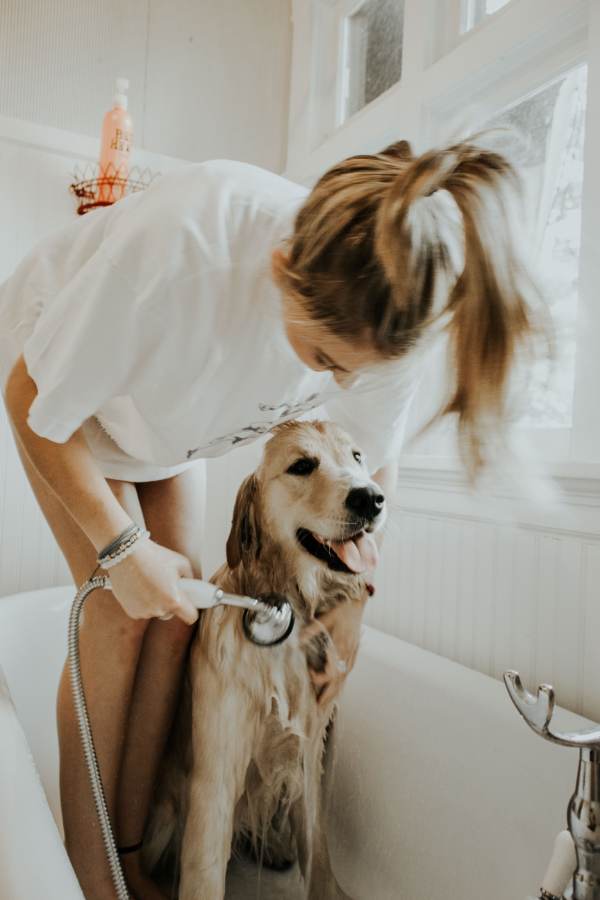
Breeds that enjoy being in the water, like Labrador retrievers, have special, water-repellent coats that keep their undercoats dry when swimming. As soapy water can penetrate your dog’s undercoat and trap moisture there, you should only bathe your Lab once every four months, unless they are exceptionally dirty.
In order to keep short, smooth-coated dogs clean, you might only need to wipe them down with a washcloth. For canines with this coat type, pet wipes are a fantastic alternative.
How To Bathe Your Puppy
Determine Your Puppy’s Coat Type
Decide what kind of shampoo and conditioner to use before you even start to wash your dog. What kind of fur your puppy has will determine this. Find out which products are best for your puppy by first speaking to your veterinarian.
Provide Treats And Cuddles
Bishop-Jenkins advises her clients to begin bathing their puppies as early as eight weeks old because it creates a habit that will last a lifetime.
But proceed cautiously and gradually. The first time a puppy goes to the groomer, bathing is frequently not even on the agenda. It only serves to demonstrate to them that grooming isn’t frightening.
Start With Lukewarm Water And A Rag
When the dog is very young, there is no need to use cleaning products. Make sure the water is warm enough for your puppy to enjoy the ritual. Dogs are sensitive to heat, and nobody wants to take a bath in scalding water.
All you really need to use up until the dog is three or four months old is a warm washcloth. Dogs have higher body temperatures than humans do. Our understanding of temperature differs from theirs.
Graduate To Using Shampoo
It’s time to start using shampoo and conditioner once your puppy is at least three months old. Choose pH-balanced, dog-specific shampoos and conditioners. Additionally, avoid selecting the cheapest option available.
Be Gentle
It is very similar to bathing a human infant to bathing a puppy that is under six months old. Puppies aren’t accustomed to the sensation, just like babies. They are powerless to defend themselves.
Instead of scrubbing, apply a very soft stream of water and make gentle hand motions that follow the direction in which your puppy’s hair grows. When blow-drying and brushing, follow this same direction.
Avoid Openings Around The Face
Anyone, including your puppy, doesn’t want soap in their eyes. You should exercise caution around your dog’s ears, nose, and mouth because even tearless shampoos can irritate their eyes.
The canine ear canal has an L-shape. If water gets down there, it gets trapped and leads to ear infections.
Using little to no product on the face. Additionally, when cleansing the face, pinch the base of the ear shut with your thumb and forefinger.
Rinse Thoroughly
Bishop-Jenkins emphasizes that your dog isn’t truly clean until the soap has been thoroughly rinsed away. In that case, thoroughly rinse your dog.
Rinse once more after you’ve decided you’ve had enough. Remove every molecule from your dog.
Don’t Forget The Conditioner
The skin and coat of dogs are the most vital components of their bodies. Moisture is removed by shampoo. To prevent their skin and fur from drying out, dogs need conditioner.
Like dog shampoo, dog conditioner is essential. Give your dog a thorough rinse to ensure that all of the conditioners is removed, just like you did with the shampoo.
Blow Dry Time
Once your puppy is clean and trained, gently blow dry them without using any blow-dry cream or other styling products. Again, gentleness is essential. Brush the hair of your dog in the direction that it grows while using a small, handheld blow dryer set to low heat.
Maintain A Bathing Routine
As your dog’s skin and fur accumulate oil and dirt over time, a monthly bath is recommended.
Puppies receive lifetime training. A puppy cannot be trained all at once. You must do it repeatedly, delicately, sparingly, and gradually while keeping in mind that you are instructing them on an experience that will affect them for the rest of their lives.
Tips For Bathing A Puppy
- Make sure the dryer isn’t too close to their skin, isn’t pointed at their eyes, and that the airflow is cool to warm but definitely not hot.
- Dogs’ natural reaction to getting wet is to roll around on any available surface, including grass, rubbing their bodies, necks, and heads. Make sure all garden, patio, and other doors are shut to prevent them from getting dirty right after a bath!
- Keep your puppy in a warm room until they’re completely dry because small, thin-coated breeds can become cold easily.
- The shampoo and/or conditioner must be thoroughly rinsed out of their hair because any leftover product could dry out or itch their coat.
- If necessary, you can use a special dog ear cleaner (available from pet stores or your veterinarian) to clean their inner ears, but you should never insert anything into their ear canals, such as cotton wool or a cotton bud.
- Make taking a bath enjoyable for you both, and it will be much simpler if you can ask a friend to assist you the first few times.

